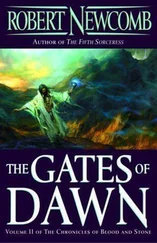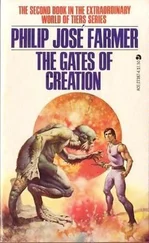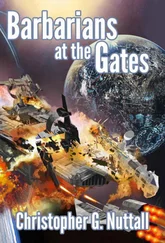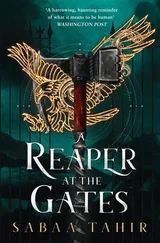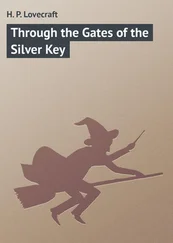STALIN
From an interview with Governor W. Averell Harriman, who spent more time with him than any other Western diplomat. Also Robert Conquest’s The Great Terror and Bertram Wolfe’s Three Who Made a Revolution.
RUDOLF ROSSLER AND LEONARD TREPPER
From an interview with Mrs. David Dallin; the D Papers, a collection of messages transmitted between the Director in Moscow and the Lucy network in Switzerland. Also Accoce’s and Quet’s The Lucy Ring and Gilles Perrault’s The Red Orchestra.
Just before Operation Blue commenced in June, 1942, a German officer named Reichel crashed behind Russian lines. Since he carried plans for the initial phase of the attack on Voronezh, German Intelligence assumed the Russians’ later moves to bolster the defense of that city were based on Reichel’s maps and data. It is far more likely that STAVKA made its decisions from Lucy’s radio reports. The Reichel affair drove Hitler into a rage at his field commanders; he sacked several and reaffirmed his own. growing mistrust of senior officers in the Wehrmacht.
THE HISTORY OF TSARITSYN—STALINGRAD—VOLGOGRAD
From Maurice Hindus’s Mother Russia and M. A. Vodolagin’s Outline of the History of Volgograd.
STALINGRAD’S TOPOGRAPHY
From interviews with Luba Bessanova, Tania Chernova and the author’s own impressions during a battlefield tour. Also Victor Nekrassov’s Front Line Stalingrad and Yeremenko’s Stalingrad.
PREPARATIONS FOR THE DEFENSE OF STALINGRAD
From A. D. Kolesnik’s The Great Victory on the Volga, 1942-1943; V. Koroteev’s Stalingrad Sketches and I Saw It; A. M. Samsonov’s The Stalingrad Battle and Stalingrad Epopeya; M. A. Vodolagin’s The Defense of Stalingrad and Stalingrad in the Great Patriotic War; Kantor and Tazurin’s The Volgarians in the Battles Around Stalingrad; Yeremenko’s Stalingrad.
THE ROUT OF THE RUSSIAN ARMIES WEST OF THE DON
From interviews with Ignacy Changar, Jacob Grubner, Hersch Gurewicz, Nikolai Tomskuschin, and a former Red Army colonel who asked to remain anonymous.
THE FIGHT FOR KALACH
From interviews with Josef Linden and Gerhard Meunch. From Pyotr Ilyin’s reminiscences in Voyenno-Istoricheskii Zhurnal (hereinafter referred to as V.I.Z.), no. 10. 1961.. Also Das Kleeblatt, the German Seventy-first Division Magazine, and Paul Carell’s Hitler Moves East 1941–43.
THE GERMAN BREAKTHROUGH TO THE VOLGA
From interviews with Friedrich Breining, Franz Broder, Hans Mich, Ottmar Kohler, Hans Oettl, Arthur Schmidt. From statements by Franz Brendgen. Also Werthen’s History of the Sixteenth Panzer Division and Gerhard von Dieckhoff’s The Third Infantry Division (Motorized). Also Y. Chepurin’s “The Fire Frontier,” lzvestia, February 2, 1963; S. Dyhne’s Ruben’s “Drops of Blood,” Voyennyi Vestnik, no. 2, 1968; and N. Melnikov’s “Let Us Fraternize,” Krasnaya Zvezda, February 2, 1963. Also Yeremenko’s Stalingrad. Ruben Ibarruri was the son of Dolores Ibarruri, La Passionaria of Spanish Civil War fame. Ruben died trying to hold the Germans at the approaches to Stalingrad.
THE BOMBING OF STALINGRAD AND ITS EFFECTS
From interviews with Alexander Akimov, Gregori Denisov, Kirill Sazykin, Pyotr Zabarskikh and recollections of Mrs. K. Karmanova, Mrs. V. N. Kliagina, V. Nekrassov, P. Nerozia, C. Viskov, and M. Vodolagin in Agapov’s After The Battle; E. Genkina’s Heroic Stalingrad; E. Gerasimov’s The Stalingradians; V. Koroteev’s I Saw It; V. Nekrassov’s Front Line Stalingrad; I. Paderin’s In the Main Direction, and M. A. Vodolagin’s The Defense of Stalingrad and Under the Walls of Stalingrad. Also Nikita Khrushchev’s Khrttshchev Remembers; Yeremenko’s Stalingrad; and A. Zarubina’s Women in the Defense of Stalingrad; also The Epic Story of Stalingrad (Collection).
GERMAN CORRIDOR TO THE VOLGA
From interviews with Franz Broder, Ottmar Kohler, Hans Oettl; statements by Franz Brendgen and Otto von der Heyde; also Werthen’s History of the Sixteenth Panzer Division and Dieckhoff’s The Third Infantry Division (Motorized).
RUSSIAN DEFENSE
From interviews with Alexander Akimov, Gregori Denisov, Jacob Grubner. Also E. Genkina’s Heroic Stalingrad; E. Gerasimov’s The Stalingradians; A. D. Kolesnik’s The Great Victory on the Volga; L. P. Koren’s There Is a Clift on the Volga; V. Koroteev’s Stalingrad Sketches and I Saw It; I. M. Loginov’s The Militia in the Battle for Its Homeland. Also Red Army Front Newspaper, August 31, 1942. Also Samsonov’s The Stalingrad Battle and Stalingrad Epopeya; Yeremenko’s Stalingrad; The Epic Story of Stalingrad (collection); and The Fight for Stalingrad (collection).
STALIN AND ZHUKOV
From Zhukov’s Marshal Zhukov’s Greatest Battles and The Memoirs of Marshal Zhukov; also Zhukov and Vasilevsky in Stalingrad Epopeya.
HITLER, HALDER, JODL
From an interview with Adolf Heusinger plus Halder’s diary. Also William L. Shirer’s The Rise and Fall of the Third Reich and Speer’s Inside the Third Reich.
FOURTH PANZER ARMY ADVANCE
From interviews with Fritz Dieckmann and Hubert Wirkner; Han Schiller’s diary; plus German Twenty-ninth Motorized Division History; also V. Chuikov’s The Battle for Stalingrad; plus Paul Carell’s Hitler Moves East.
KHRUSHCHEV’S CONVERSATION WITH STALIN
From Khrushchev’s Khrushchev Remembers.
VASSILI CHUIKOV’S ASSUMPTION OF COMMAND
From N. I. Krylov in Stalingrad Epopeya; Chuikov’s The Battle for Stalingrad and Yeremenko’s Stalingrad.
THE MEETINGS AT THE KREMLIN
From A. M. Vasilevsky in Stalingrad Epopeya and Zhukov’s Marshal Zhukov’s Greatest Battles and The Memoirs of Marshal Zhukov.
THE ENTRY OF GERMAN INFANTRY INTO CENTRAL STALINGRAD
From interviews with Giinter von Below, Gerhard Dietzel, Gerhard Meunch, Arthur Schmidt; statement by Hans Schiller. Also Werner Halle’s diary in Twenty-ninth Division history.
RUSSIAN COUNTERMOVES (this and next two chapters)
Chuikov’s The Battle for Stalingrad; A. S. Chuyanov’s “From the Stalingrad Diary,” Oktyaber no. 2, 1968; E. Kriger’s article in lzvestia, Feb. 3, 1970; Ivan Paderin’s “Infantryman of the Party,” Krasnaya Zvedza, Feb. 2, 1963, and his In the Main Direction; Colonels Petrakov and Yelin’s recollections in The Fight for Stalingrad; A. I. Rodimtsev’s “Stormy Days and Nights,” Yunost, no. 2, 1968; his On the Banks of the Mandanares and Volga and On the Last Frontier, and his excerpted diary in Sovetskaya Rossiya, Feb. 1, 1970; K. K. Rokossovsky’s “The Stalingrad Epopeya,” Sputnik, no. 2, 1968; I. Samchuk’s The Thirteenth Guards; M. Vavilova’s “A Severe Existence” in Krasnaya Zvezda, Feb. I, 1963; Samsonov’s The Stalingrad Battle and Stalingrad Epopeya.
Читать дальше

